blog
How We Can Do Better To Feed Our Babies

As a Registered Dietitian and soon-to-be mom, what our babies and children eat is both a professional and personal priority for me. New research commissioned by Beech-Nut on the dietary patterns of children ages 0-2 make it clear – we can do better with what and how infants are eating.
I know well that feeding a child anything, let alone anything nutritious, can be challenging at times. In my practice, I see parents have the best of intentions when it comes to feeding their little ones. But, without clear nutrition guidelines for infants under 2 years of age and reliable educational resources for parents, things begin to slip quickly.
The Startling Truth About What Babies Eat
- By 15 months, babies eat 6 ½ teaspoons of added sugars per day, mainly from fruit drinks, soda, cookies, sweetened yogurt and ready-eat-cereals, which are introduced into the diet as early as 9 months.
- What it means: To put that into perspective, an 8-ounce cup of cola has about 6 ½ teaspoons of sugar. So, babies are eating as much sugar in a day as what you’ll find in an entire cup of soda!
- By 1 year of age, the number-one source of fruit is fruit juice.
- What it means: Kids are drinking too much sugar, even if it is natural sugar from fruit juice. Drinking juice instead of eating whole fruit adds more sugar and less fiber to children’s diets.
- 1 out of 3 children 12-23 months old do not consume any fruit.
- What it means: These toddlers are missing out on key nutrients – such as fiber – because they aren’t eating any fruit!
- Less than half of babies are consuming any vegetables by the time they are 23 months old. And, for the babies who do eat vegetables, the most common veggie is potatoes from French fries and potato chips.
- What it means: When processed options like fries and chips are the most common form of vegetable, babies are missing out on nutrient-dense choices found in green veggies. In fact, only 1 percent of babies consume green vegetables!
- By 1 year of age, babies are eating more than 1500 mg of sodium per day from foods like hot dogs, cured meats, crackers, cheese and mixed pasta dishes.
- What it means: 1500 mg is the recommended daily limit of sodium for a fully mature adult.
See more research results in the infographics below:
What Can We Do About Babies’ Diets?
When nutrient-dense foods like fruits, vegetables, lean proteins, legumes, whole grains and wholesome baby foods like Beech-Nut blends are fed to baby during the first year, better eating habits are formed. And, just the opposite holds true – when non-nutritious, empty calories like processed, packaged foods and sweetened drinks are introduced, palates are set to crave what is sweet and salty, which ultimately has consequences for future health.
There are ways to successfully transition children in their most formative years to a lifetime of healthful eating, and it can start as early as the very first bites. I want to offer parents strategies for how they can select, prepare and keep the right foods for baby in the diet, make nutritious foods exciting, create produce-filled meals and replace processed food for whole foods. By adapting these solutions, the dietary patterns can shift to reflect more fruits and vegetables, and less sugar and sodium. Here are a few of my tips for parents:
Dish out the Baby Food for Longer
Research shows that babies have more balanced diets between 6-8 months when they are given baby food. Keep baby food in the mix a bit longer, either on its own or incorporating it into the transition to table foods.
Make baby food Exciting
Baby food, whether homemade or store bought, doesn’t have to be synonymous with bland, flavorless blends. Think of feeding your babies real food that adults would eat (prepared in safe consistencies for babies, of course!) that are filled with flavor, texture, color and some fun.
Shop for the Right Baby Food
Not all baby food is created equal, and with so many choices it can be challenging to know which one is best for your baby. Pick blends without added water, with a non-GMO or organic label and those with vibrant colors.
Transition from Real Purees to Real Foods
When transitioning baby from pureed foods to whole foods, think real – which means foods from the ground or farm. While packaged goods have their place in the diet, and can save time and mess, they can often be high in sodium and added sugar with little to no nutrition value.
Click here to download a PDF version of my “Tips to Table Food” to help parents navigate a successful transition from baby food and into a nutritious life.
Consult your pediatrician for recommendations specific to your baby’s diet.





